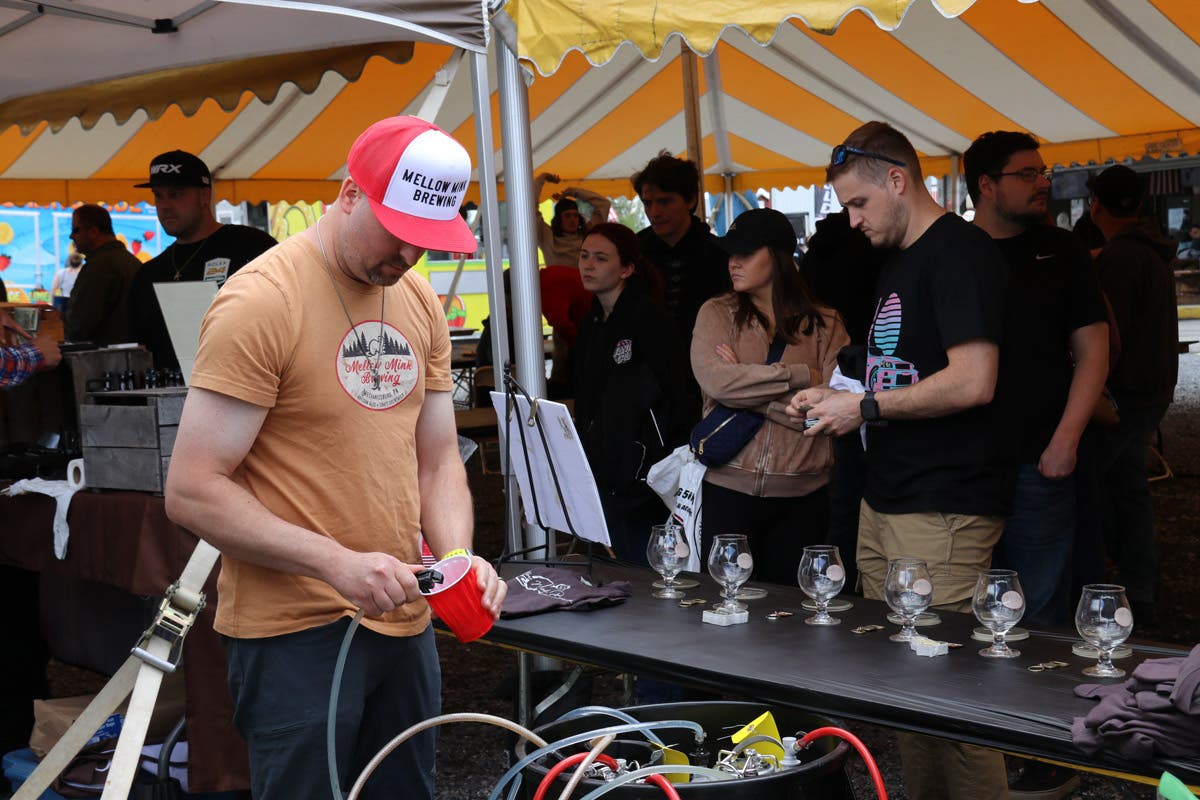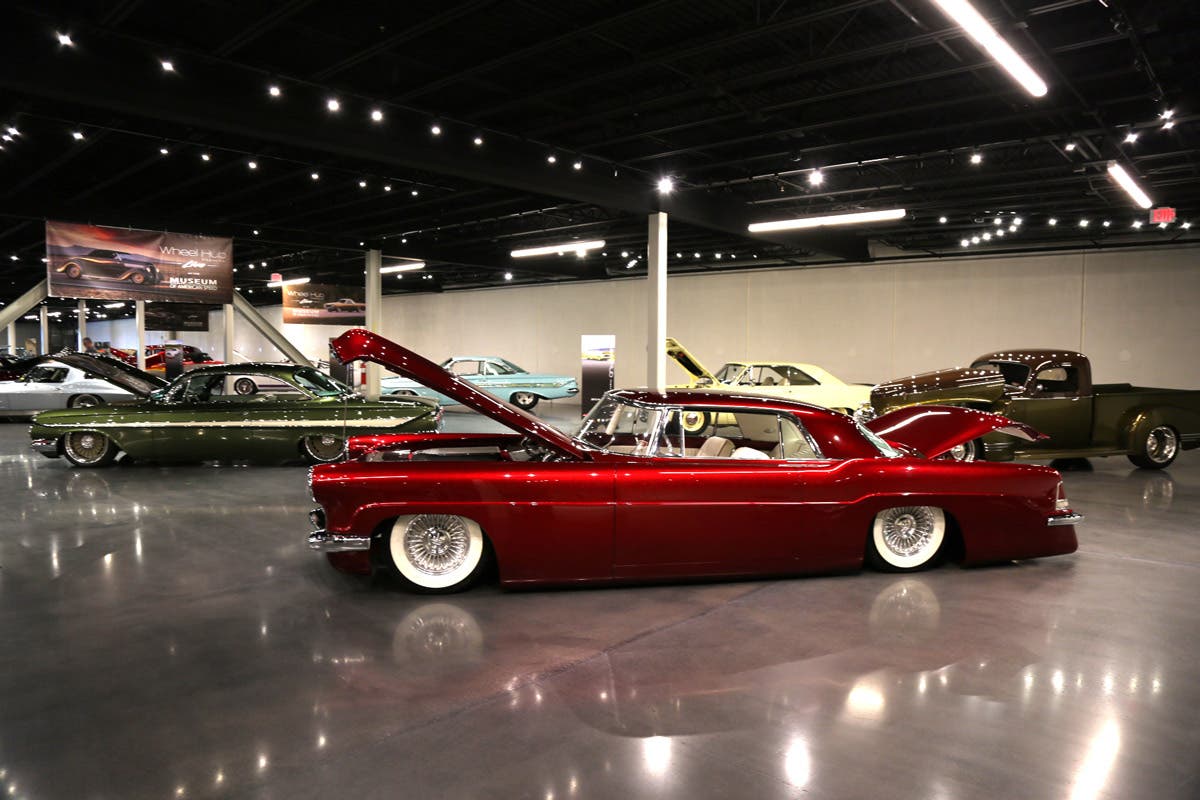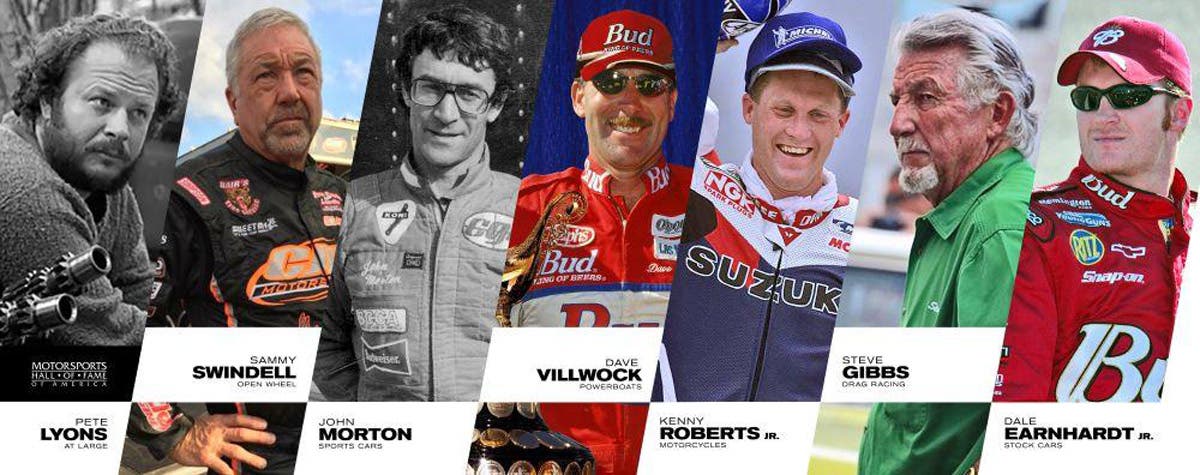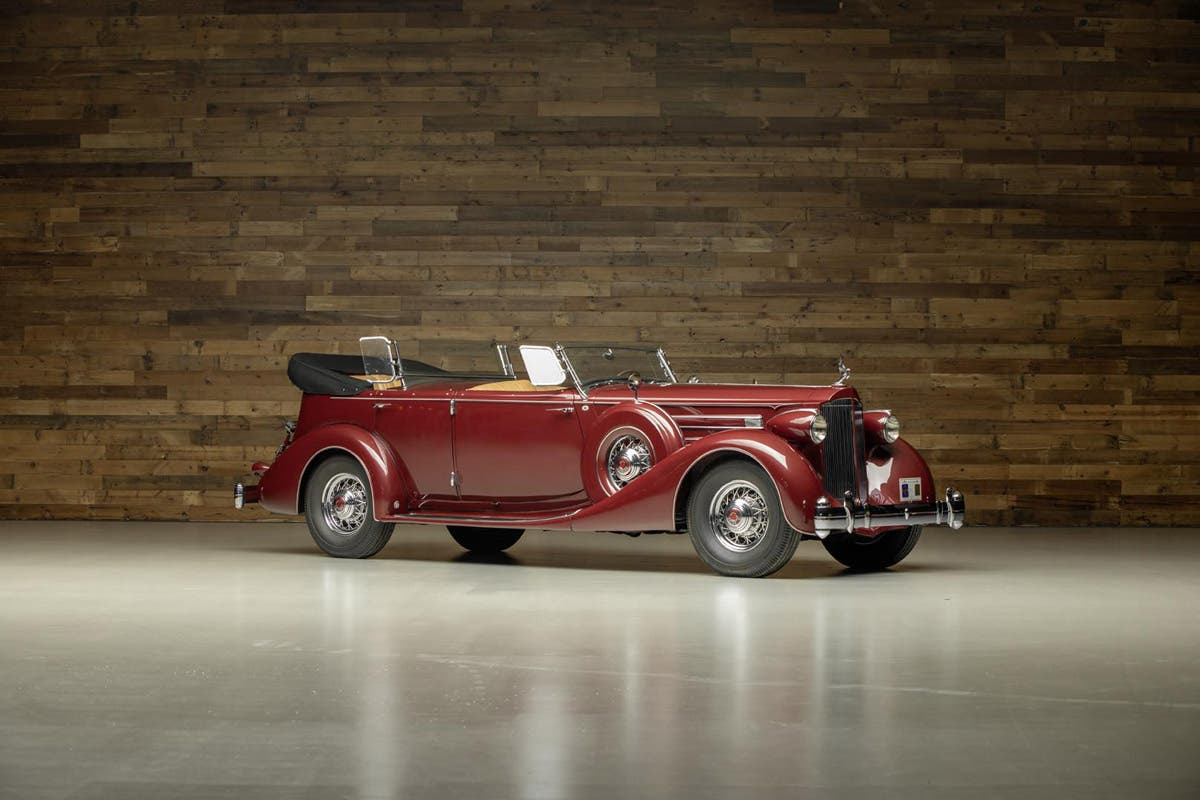Early Ford V-8 Foundation ‘Raising the Rotunda’ campaign underway
The Early Ford V-8 Foundation & Museum in Auburn, Ind., is planning for a new, 20,000-square-foot museum. The museum’s unique design will be a tribute to the Ford Rotunda, first seen at the 1933-’34 World’s Fair in Chicago.
Story and photos by Ron Kowalke
The Early Ford V-8 Foundation and its museum exist to promote 1932-’53 Ford Motor Co. vehicles and the flathead V-8 engines that powered them. The museum is located on 2.5 acres of land adjacent to Interstate 69 in Auburn, Ind. According to George Elbel, president of the Early Ford V-8 Foundation (EFV-8F), the museum currently houses 5,000 display items, including FoMoCo vehicles, flathead engines and memorabilia. It also holds offices, a gift shop and a research library/archive that contains thousands of books and brochures devoted to 1932-’53 FoMoCo products. All of this is jammed into a 8,000-square-foot storage and maintenance building — known internally as Phase I — that currently doubles as the EFV-8F museum.
The recent purchase of an additional 8.7 acres of land surrounding the current property allows the EFV-8F to move forward on its goal to build a new, 20,000-square-foot museum that will front the Phase I building and allow for its return to its original designated use for storage and maintenance. This new, larger museum, known as Phase II, will provide for both growth in display area and act as a spectator draw due to its proposed unique design.
World’s Fair tribute
The generic “Phase II” label might lack the pizzazz needed to generate donations toward helping build the new museum. To overcome this lack of buzz, according to Elbel, a campaign titled “Raising the Rotunda” has begun. The new museum’s design will mimic the stacked automotive gear look of FoMoCo’s limestone exposition center that was a showpiece of the 1933-’34 World’s Fair in Chicago. The structure was subsequently recreated and reopened as the Ford Rotunda in Dearborn, Mich., in 1953. The EFV-8F’s version of the Rotunda, according to Joshua Conrad, EFV-8F museum collections coordinator, will be constructed of steel rather than limestone as a cost-saving measure.
“There are no blueprints yet, and no architect has been hired yet,” Elbel explained of Phase II’s current status. “We’re waiting on funds to be generated.” He added, “If we get major donors, we’ll build the whole [20,000-square-foot] building.” If donations fail to meet expenses, the fallback plan, according to Elbel, is the new museum will be constructed piecemeal as funding allows.
Elbel said the EFV-8F has a fundraising committee to reach out to donors. This committee is comprised of four EFV-8F trustees, whom Conrad termed “real savvy business guys.”
Elbel stated that Phase II fundraising has just begun. Asked if the EFV-8F would be open to having some major company acquire the sponsorship naming rights to the Rotunda museum in exchange for a large donation, Conrad stressed, “Only if it coincides with our mission [of promoting 1932-’53 FoMoCo history]. That’s the reason we’re here. Even people into later Fords are all into flatheads.”
The need for a permanent home
Elbel said the EFV-8F was first organized in 1991. At that time, all vehicles and memorabilia donated to the organization were scattered throughout the country, on display in other museums.
“We were leasing display space in other museums and we were forced to put things in storage,” recalled Elbel. Among other museums showing EFV-8F-owned items, according to Conrad, were the Don Garlits Drag Racing Museum in Florida, the Towe Museum in California and the Beller Museum in Illinois. Conrad said as the collections of these other museums expanded, space for EFV-8F displays diminished and the writing was on the wall. Elbel stated, “We needed our own building for display.”
With donations that included a generous amount from the Early Ford V-8 Club, the original 2.5-acre parcel of property in Auburn was purchased in 2003. The Phase I facility was completed in 2009.
According to Conrad, “The current 8,000-square-foot building was always planned as a maintenance and storage facility. It was built first due to available land space and cost.” While currently cramped as it doubles as a museum, he added, “It allowed for the items in storage to be displayed in one place [until Phase II is completed].” It’s expected that once the Rotunda museum is completed, available display space will accommodate up to 75 vehicles.
During the EFV-8F’s formative years, Elbel said several different locations were being considered as a potential home base for the museum. “We settled on Auburn because it’s an automotive community.”
Due to Auburn’s current depth of automotive attractions, including the Auburn Cord Duesenberg Automobile Museum and the neighboring Auctions America Auction Park located across I-69 from the EFV-8F museum, Conrad dubbed the area “the perfect little Mayberry for automotive enthusiasts.”
Elbel said that acquiring property near what was then the Kruse International Auction Park was part of the appeal for the 2003 land buy. Now under the ownership of Auctions America, Elbel said, “There’s a renewed interest in Auburn automotive-related activities since Auctions America took over the Auction Park.”
Since the inception of the Phase I building, the EFV-8F has played host to a summertime early Ford-themed collector car show on its grounds to raise funds to operate the museum.
In 2014, according to Elbel, the schedule will expand to two car shows. One will be held in May and the second in September. Both will coincide with sales held at the Auctions America Auction Park. Additional revenue generated from this expanded show schedule will be directed toward the “Raising the Rotunda” fund.
An eye toward future generations
Writing in the EFV-8F’s bi-monthly publication titled Foundation News, EFV-8F past-president Bill Tindall said: “Preserving history through the effort of creating museums is one of the most important things any society should be doing to preserve culture, technology and its heritage.”
In support of Tindall’s stance and addressing the well-publicized ageing dilemma the collector vehicle industry is facing — known as the “graying of the hobby” — Elbel stressed that educating youth is a priority of the EFV-8F’s museum. He lamented, “Younger people have no connection to these older cars.” His verbalized nightmare revolves around flathead-era FoMoCo vehicles ending up unused in garages after their Early Ford V-8 Club owners pass away and the cars and trucks are inherited by younger generations who have no interest in the vehicles.
To combat this worst-case scenario of mothballed early Fords, Conrad emphasized, “We want to get kids involved; get them into the museum to see the displays.” Knowing a hands-on approach works best with youngsters, he added, “We want to do an educational program for the kids. We want to have them completely tear down a one-cylinder engine and rebuild it. This will allow them to learn how things work.”
Push for member growth
Part of the ongoing education process also involves getting more Early Ford V-8 Club members to support the EFV-8F and its museum. The Early Ford V-8 Club, according to Elbel, has approximately 9,000 members while the EFV-8F has 900. Asked about the disparity in membership, Elbel replied, “Early Ford V-8 Club members don’t understand [the EFV-8F].”
This lack of understanding partially stems from the fact that the Early Ford V-8 Club and the Early Ford V-8 Foundation, while having similar names, are two separate entities.
Each answers to different regulations set forth by the Internal Revenue Service. Best explained by Tindall in a recent “Foundation News,” “Federal law places the Early Ford V-8 Club under IRS rules as a 501c7 non-profit tax-exempt organization, which exists to benefit its members. The Early Ford V-8 Foundation is a 501c3 tax-exempt organization which exists to benefit the general public by its mission to educate people on matters related to early V-8s…. Since the ‘mission’ of these organizations are quite different, the IRS insists their financial affairs be very separate.”
Tindall continued, “As a consequence of their similarities, misconceptions abound and many early Ford enthusiasts believe paying dues to one group is the same as paying to both groups.”
Overcoming these misconceptions is critical, according to Elbel, toward enlarging EFV-8F membership and, ultimately, getting donations — both financial and display items — to make both the “Raising the Rotunda” campaign and completing the Phase II museum successful.
“It’s our goal,” Elbel added, “to expose the EFV-8F to all early Ford owners to know they have a place to donate their cars and memorabilia.”
To learn more about the EFV-8F and its “Raising the Rotunda” campaign, visit www.fordv8foundation.org or write to: Early Ford V-8 Foundation & Museum, P.O. Box 284, Auburn, IN 46706.
Ford fans should check out these Blue Oval resources from Old Cars Weekly:








